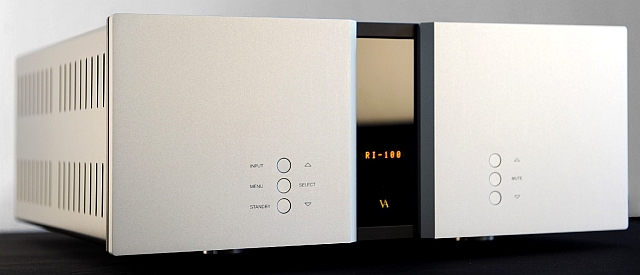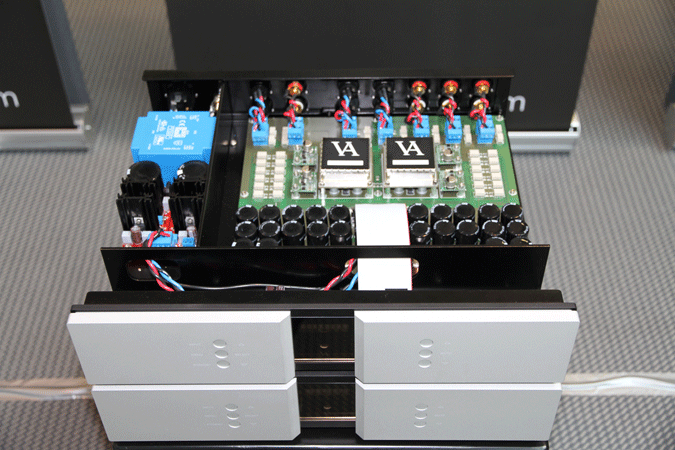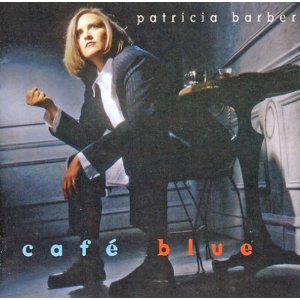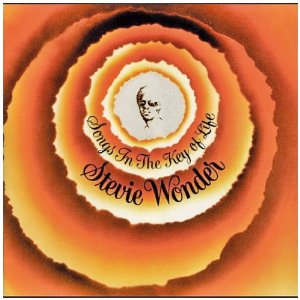Vitus Audio RI-100 Integrated Amplifier

|
Vitus Audio RI-100 Integrated Amplifier |
|
Redefining A Genre |
|
|
|
January, 2012 |

I first met Hans Ole Vitus, the President and Chief Designer of Vitus Audio, at the 2004 Consumer Electronics Show (CES) in Las Vegas, Nevada. He was making his first appearance at a U.S. audio show and was demonstrating his massively built and priced SM-100 mono amps ($45,000/pair). They were part of a system that also included the Electrocompaniet EMC-1UP CD player, Sound Lab Ultimate-1 loudspeakers, and Argento Audio cabling. Unfortunately, Vitus’ own RL-100 Linestage ($22,000) and RP-100 Phono Stage ($19,000) were held up in customs at the time of my visit. The system sounded like it looked – big, bold and beautiful. It completely dominated the room, physically and sonically.
I found Vitus himself to be very engaging and approachable for someone who built components that are obviously not for the average Joe audiophile like me. I would imagine that Vitus’ usual clients are people who have agents or rule countries, and those types of designers tend to be rather stuffy and elitist. But just the opposite was true. Vitus was very much a “regular guy” who just happened to built incredibly gorgeous sounding audio components. He was new to the U.S. market, so he treated everyone he met with warmth and humor. Of course it probably didn’t hurt that I enthused at great length about the rare beauty of his work. For those who have never seen Vitus Audio equipment in person, think of great European architecture… this is better.
The following year Vitus was back at the CES but this time with a new component that I was genuinely excited about, the SS-010. The SS-010 was essentially a 25 watt, pure Class-A integrated amp that could accommodate a single pair of balanced (XLR) or unbalanced (RCA) inputs and had a built-in volume control. I was excited because the amp only cost $12,000. Color me silly, but if Mercedes Benz announced a new car that only cost $12k, I know a lot of folks who’d be downright giddy. What’s more, Vitus told me that he was planning to develop a more affordable line of products that would be priced at around the $10,000 price point (each) as sort of an entry level into the real high-end. But just a few short years later, the cost of the SS-010 jumped up to $20,000 and the “entry level” preamp and amp that was coming turned into the ($25,000) SL-010 linestage and ($50,000/pair) SM-010 mono amps that I raved about back in January of 2010.
Bear in mind that in no way am I saying that the Vitus components are not worth the money being asked for them. The level of build is bullet-proof, the sonics are amazing, and the aesthetics are off the chain. It’s just that… man, Vitus! When will this guy ever build something that more people can afford?!
Ladies and gentlemen, I give you the Vitus Audio RI-100 Integrated amplifier.
About the Amp

The RI-100 is the first new product available from the company’s “Reference Series” components. The Reference Series represents Vitus’ attempt to build products that maintain the company’s high standards for music reproduction but at a more affordable price point. The RI-100 is a 300 watt RMS (into 8 Ohm) integrated amp that features three balanced and two unbalanced inputs. One of the unbalanced inputs doubles as the input for the optional phonostage. You also get a set of unbalanced outputs which allows you to use the RI-100 as a stand-alone preamp. You can even add another amp for a biamp configuration. Another option is a built-in DAC that makes this potentially a completely self contained audio system. The amplifier is 300 watts RMS of Class-AB power, which should be more than enough to drive almost any speaker.
At 17” wide x 7.5” high and 18.5” deep, and weighing in at a monstrous 88 lbs, the RI-100 is an absolute beast. A peek inside shows the massive toroidal transformer and the same fanatical dedication to craftsmanship and use of the highest quality parts, that are the hallmark of all Vitus products. The faceplate bears the unmistakable resemblance to all other products in the Vitus family. The left side features three flush mounted buttons that allow you to select the “Input”, put the system in “MENU” mode, and toggle the system in and out of “Standby” mode. In Menu mode you can alter the settings of the RI-100 and in Standby mode the controls deactivated. The RI-100 does not shut down in Standby mode in order to maintain the optimal operating temperature.
The right side has the buttons that allows you to control the volume level and put the system in “MUTE”. All system functions (and there are many) are visible on an LED display in the center of the faceplate. The chassis, while not made of the customary thick slabs of sculpted aluminum found on other Vitus amps, is still very substantial and extremely well made. It has slots strategically cut into the top and sides to help dissipate heat. The rear of the chassis features the source component inputs, balanced preamp output and some very substantial speaker terminals. There is also a terminal for the phono/Earth ground and a A/C mains connection. Just below the A/C is a receptacle which houses a pair of mains fuses; one fuse protects that amp and the other is a spare. This turned out to be a pretty thoughtful design touch because within a couple of weeks of using the amp I actually did blow the mains fuse. Changing the fuse only took a couple of minutes and I was back in business.
An Apple remote control is included for the primary operation of the RI-100. The same remote can be used for other Vitus Audio Reference Series components such as the soon to be available RS-100 stereo amp and RCD-100 CD player. You’ll have to take care to pair the remotes properly to their devices, especially if you already have other Apple products which utilize the same remote. This was a problem that I had as my Apple TV remote would simultaneously control my TV and accidentally shut off the amp mid song. Not good. Luckily, Vitus provides one of the most detailed and comprehensive owners manuals that I’ve ever seen. So this issue was easily remedied.
Listening to an amp and preamp
Most of my listening was done using the OPPO Digital DV-980H Universal Disc Player as a transport connected to the coaxial digital input of the Citypulse Audio DA-2.03e USB DAC. Analog was courtesy of the wonderful new George Warren Precision Sound turntable and arm, and a Benz Micro Ace cartridge feeding a Clearaudio Smartphono phonostage. Amplification was a Soaring Audio SLC-A300 and a pair of the excellent new Classe Audio CA-M600 mono amps that I reviewed back in October. My long time reference speakers are the Escalante Design Fremonts and I also had the Dynaudio Sapphires on hand. The system was connected with the stunning Hemmingway Audio Prime Signature MK II cables, accept the digital cable which was the Entreq Audio Konstantin.
I used the RI-100 both as an integrated amp and as a preamp by utilizing its balanced preamp outputs into the Classe monos. After the usual two weeks of break-in I finally got down to some serious listening.
 I began with one of my favorite vinyl discs, the 45-RPM pressing of Patricia Barber’s Café Blue [Mobile Fidelity MFSL 3-45002]. This is an album whose songs should be familiar to most audiophiles, but the level of detail that is pulled from this 45-RPM version is amazing. From the start of the opening track, “What A Shame” it is obvious that the RI-100 is something special. Driving the Dynaudio Sapphires, the RI-100 rendered this song with loads of soundstage detail. The space occupied by Barber’s piano was prominent, as was the holographic quality of her smoky vocal. The wonderful bass line throughout this song has natural depth and resonance and sounds like its coming from an acoustic instrument and not a synthesizer as it sometimes can.
I began with one of my favorite vinyl discs, the 45-RPM pressing of Patricia Barber’s Café Blue [Mobile Fidelity MFSL 3-45002]. This is an album whose songs should be familiar to most audiophiles, but the level of detail that is pulled from this 45-RPM version is amazing. From the start of the opening track, “What A Shame” it is obvious that the RI-100 is something special. Driving the Dynaudio Sapphires, the RI-100 rendered this song with loads of soundstage detail. The space occupied by Barber’s piano was prominent, as was the holographic quality of her smoky vocal. The wonderful bass line throughout this song has natural depth and resonance and sounds like its coming from an acoustic instrument and not a synthesizer as it sometimes can.
“Ode To Billy Joe” (side three, track three) is another tune that contains a really cool bass line, but it also is accentuated with finger-snaps that really popped through the Sapphires. This was the coolest this song has ever sounded to me. Next, it was on to the most dynamic song from this album, “Nardis” (side five, track one). It features piano and percussion solos that are must hears for evaluating any audio component, which is probably why you hear it so much at the various high-end shows. Rhythm, pace and speed all blossom through the RI-100, drawing you deeper into the performance of the musicians. They all seem to be occupying realistic spaces within the soundstage, giving the recording a “live” feel.
The RI-100’s 300 watts RMS are the most powerful sounding I’ve heard from an integrated amp since I spent a few weeks with the legendary ASR Emitter II Exclusive ($24,900). The ASR is a 280 watt, four-chassis monster that was in a class by itself for reference quality integrated amps. It now has company. The RI-100 should add enough power and finesse to a system to satisfy even the most power hungry audio enthusiasts. Vitus has always had a knack for building amps that perform far beyond their stated power specs, and the RI-100 is no different.
All this and a preamp too!
When I saw that the amp came with a set of balanced preamp outputs I got more than a little excited. I knew that the lineage of the RI-100’s preamp section had to be based on great linestages like the RL-100 and SL-010. I connected the RI-100’s outputs to the Classe Audio CA-M600 mono amps. To be honest, there was hardly a noticeable difference. The overall focus of musical instruments on some of the more demanding songs that I listened to may have been a bit tighter using the Classe amps but not by much. I was greatly impressed with just how well this preamp section meshed with these amps.  When I listened to “I Wish” from Stevie Wonder’s Songs In The Key Of Life [Tamla T18-84062] I was floored. The horn section on this song in the hands of mediocre electronics can be offensively bright. But the Vitus/Classe combination made it sound splendidly musical. You can easily sense the air and brassy nature of this song and it makes the performance so much more engaging.
When I listened to “I Wish” from Stevie Wonder’s Songs In The Key Of Life [Tamla T18-84062] I was floored. The horn section on this song in the hands of mediocre electronics can be offensively bright. But the Vitus/Classe combination made it sound splendidly musical. You can easily sense the air and brassy nature of this song and it makes the performance so much more engaging.
I was so surprised by the RI-100’s linestage performance that I felt the need to compare it to another linestage, so I borrowed an XLH SL-11XS ($5,000) linestage from my brother and installed it with the Classe amps. Listening first to “I Wish” again I noticed right away that the soundstage did not sound quite as open as it did with the Vitus. And though the XLH did not add any harshness or brightness to the song, especially the horn section, it also didn’t sound quite as dynamic as the Vitus. Wanting to hear something a little more contemporary, I played “Stop The World” from Maxwell’s Blacksummer’s Night CD [Columbia CK 89142]. The neo-soul singer’s voice can sometimes sound a bit nasal, but it was rendered with fullness and body when I heard it through the Vitus/Classe combo. The XLH/Classe combo also did a good job of fleshing out this unique male vocal. But I would have to say that with the Vitus, the whole performance, including the musicians’ performances sounded more full-bodied and true. Overall, this is one of the finest performing linestages in an integrated amp I’ve heard.
An Unfinished Symphony
For some strange reason I seem to have come across a lot of great integrated amps over the years. Among them are the Vitus Audio SS-010, Audio Analogue Maestro Duecento, ASR Emitter II Exclusive and Behold Gentle G-192. So while the prospect of getting a new Vitus Audio integrated amp in for review was certainly exciting, what really got me fired up was getting an amp, which also had a built-in phono stage and DAC. Earlier this year, Vitus unleashed the mind-blowing, two-chassis, $60,000-plus “Masterpiece Series” MP-201 phono preamp. I couldn’t help but think that if somehow the RI-100’s phono stage had any of the DNA of the MP-201, that it could distinguish itself from all other integrateds. And when you add on the built-in DAC as well, you’re not just talking about a potential world beater, you’re talking about a WORLD RULER! What’s that you say? A bit too dramatic? Okay, I’ll back it down a bit, but you get my drift.
But sadly, the DAC and phono-stage options were not available at the time I received my review sample. Thankfully, Vitus has assured me that once they are available that I’ll be able to do a follow-up review. So I’ve got that going for me.
Conclusion
The Vitus Audio RI-100 is a scary good performer. Forget any references to “entry level” or “price points”. Those terms are only relative to Vitus’ own Signature and Masterpiece Series components, which frankly, exist on a much different level from most other companies’ components anyway. The RI-100’s linestage is as good as any I’ve had in house in a while. It worked surprisingly well with the Classe CA-M600 mono amps and to my ears, outperformed the highly praised XLH preamp.
 As an integrated amp, its 300 watts got every ounce of performance out of both the Fremonts and Sapphires. Soundstaging was fantastic, and the musicality and imaging were spot on, adding a tremendous sense of realism to my listening sessions. There was no segment of its performance that I felt was significantly lacking, and I suspect over time will get even better. This combination of power, musicality and system flexibility is rare. And while its $12,000 price tag is hardly cheap, given its stellar lineage, the RI-100 represents a flat-out steal and my choice for 2011’s Most Wanted Component Award! Adding the optional DAC and phonostage has the potential to make this the amp that redefines the genre. Enthusiastically recommended!
As an integrated amp, its 300 watts got every ounce of performance out of both the Fremonts and Sapphires. Soundstaging was fantastic, and the musicality and imaging were spot on, adding a tremendous sense of realism to my listening sessions. There was no segment of its performance that I felt was significantly lacking, and I suspect over time will get even better. This combination of power, musicality and system flexibility is rare. And while its $12,000 price tag is hardly cheap, given its stellar lineage, the RI-100 represents a flat-out steal and my choice for 2011’s Most Wanted Component Award! Adding the optional DAC and phonostage has the potential to make this the amp that redefines the genre. Enthusiastically recommended!
![]()
Specifications
Rated Output Power: 2 x 300W (RMS into 8 Ohm) Class A/B
Frequency Response: DC to +500KHz
Signal to Noise Ratio: > 100dB
THD+ Noise: Better than 0,01%
Input Sensitivity: with volume set @ 0dB / RCA = 2, 6 / XLR 5,2V RMS
Input Impedance: RCA = 22KΩ / XLR = 22K Ω
Slew Rate: > 35V/ μs
Power Consumption (RMS): Standby: < 3W, Class AB (no load): 90W
Dimensions (W x H x D): 435x195x470 mm
Weight: 40Kg
Price: $12,000.00 USA
Address:
AVA Group A/S
Sandgaardsvej 31
DK-7400 Herning
Denmark
Phone: +45 9626 8046
FAX: +45 9626 8045
Website: www.vitusaudio.com
Email: info@vitusaudio.com
![]()
Don’t forget to bookmark us! (CTRL-SHFT-D)
Stereo Times Masthead
Publisher/Founder
Clement Perry
Editor
Dave Thomas
Senior Editors
Frank Alles, Mike Girardi, Russell Lichter, Terry London, Moreno Mitchell, Paul Szabady, Bill Wells, Mike Wright, and Stephen Yan,
Current Contributors
David Abramson, Tim Barrall, Dave Allison, Ron Cook, Lewis Dardick, John Hoffman, Dan Secula, Don Shaulis, Greg Simmons, Eric Teh, Greg Voth, Richard Willie, Ed Van Winkle, Rob Dockery, Richard Doran, and Daveed Turek
Site Management Clement Perry
Ad Designer: Martin Perry





Be the first to comment on: Vitus Audio RI-100 Integrated Amplifier